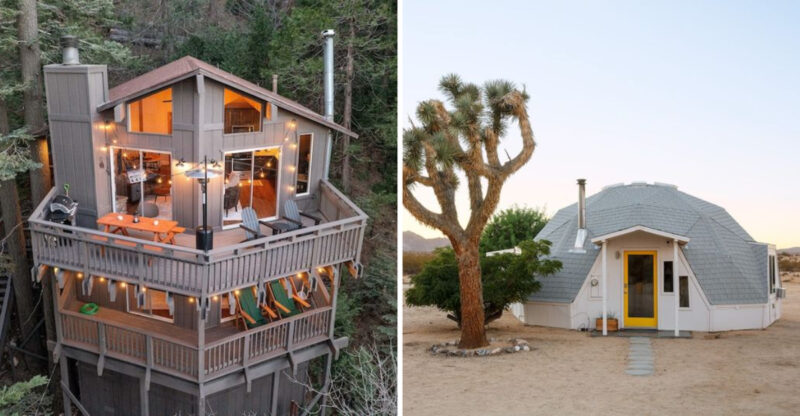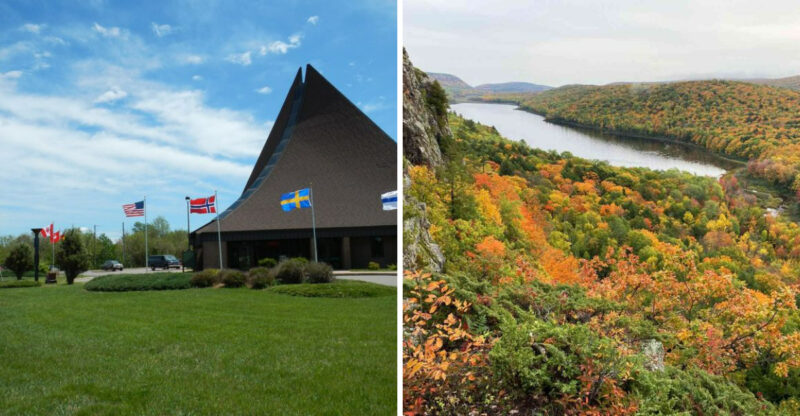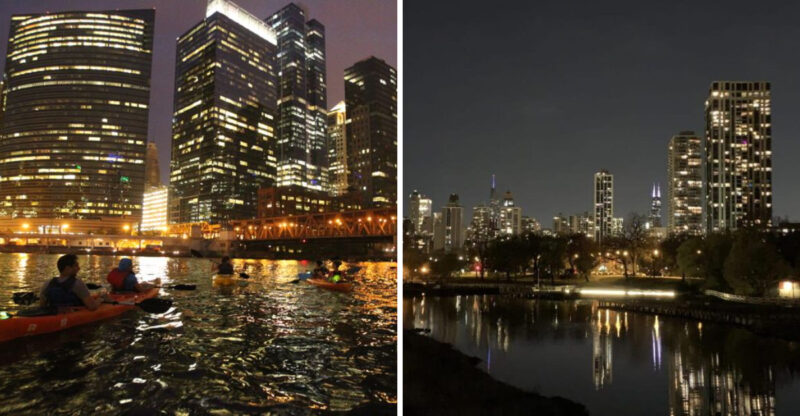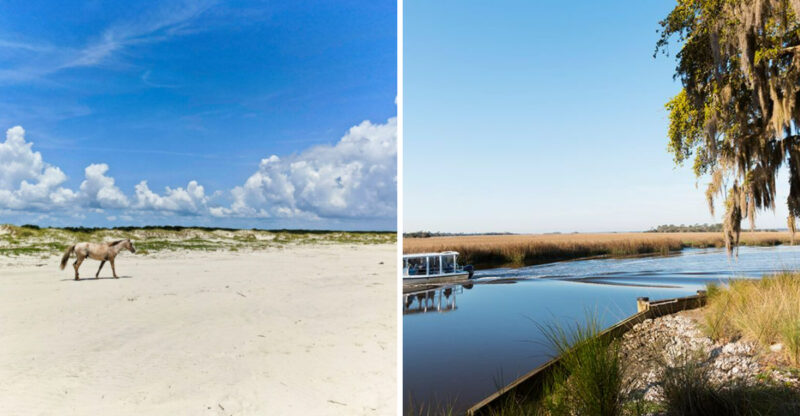Top Hikes Near Denver To Explore The Rockies
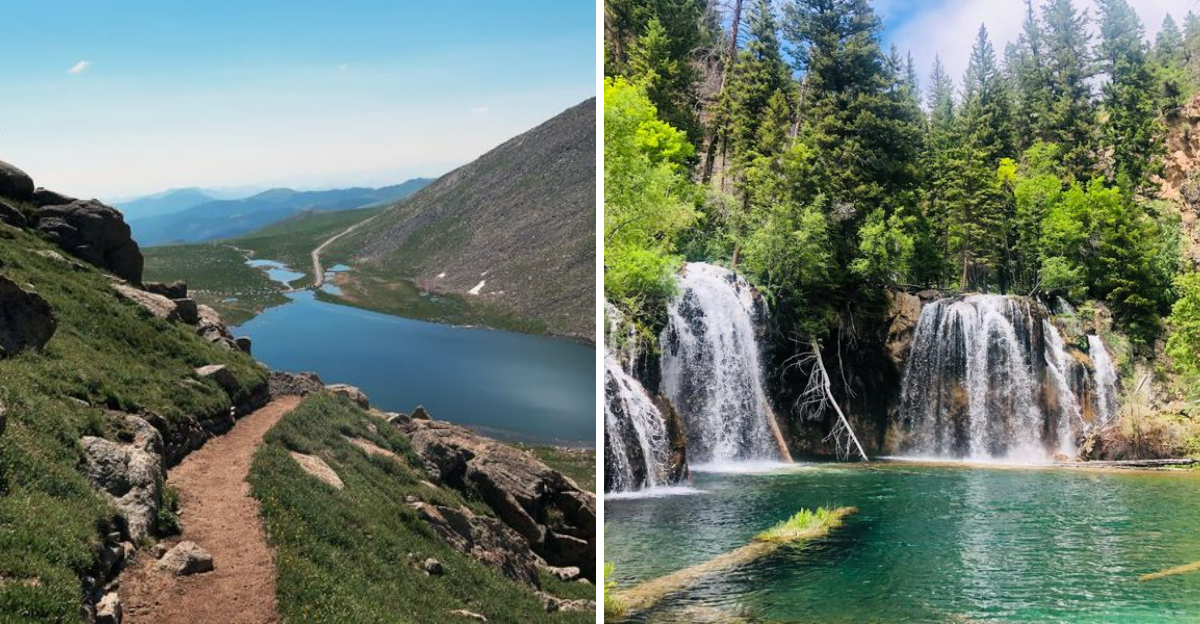
Denver sits right at the doorstep of the Rocky Mountains, making it one of the best places in America for outdoor adventures. Whether you want a short walk with amazing views or a challenging climb to a mountain peak, there are trails for every skill level within an hour’s drive.
I’ve put together this guide to help you discover some of the most beautiful and rewarding hikes the area has to offer.
1. Mount Bierstadt
Standing tall at over 14,000 feet, this mountain offers one of the easiest climbs among Colorado’s famous fourteeners. You’ll start early in the morning to avoid afternoon thunderstorms, which are common in the Rockies during summer months. The trail stretches about seven miles round trip, taking most hikers between four to six hours.
I love how accessible this peak feels compared to other high-altitude climbs. The path winds through willow groves and across alpine meadows before the final rocky scramble to the summit. Once you reach the top, the 360-degree views will absolutely take your breath away.
Remember to bring plenty of water and snacks for energy. The altitude can affect anyone, so take your time and listen to your body throughout the climb.
2. Hanging Lake
This stunning turquoise lake seems to defy gravity as it clings to the side of a cliff in Glenwood Canyon. Getting there requires a reservation system since the trail became so popular that it needed protection from overuse. The hike climbs steeply for about 1.2 miles, gaining over 1,000 feet in elevation.
Your legs will definitely feel the burn on the way up, but the destination makes every step worthwhile. The lake’s incredible blue-green color comes from minerals dissolved in the water. Delicate travertine formations edge the pool, creating a magical scene.
Swimming and touching the lake are strictly prohibited to preserve this fragile ecosystem. Arrive prepared with good hiking shoes because the trail can be slippery in spots.
3. Royal Arch Trail
Boulder’s Chautauqua Park serves as the starting point for this rewarding climb to a natural sandstone arch. The trail covers about 3.4 miles round trip with some steep sections that will get your heart pumping. You’ll pass through ponderosa pine forests and across rocky slopes with incredible views of Boulder below.
What makes this hike special is the dramatic arch formation waiting at the end. Standing beneath the massive stone curve feels like stepping into another world. Many hikers time their visit for sunrise or sunset when the light paints the rocks in brilliant colors.
The trail can get crowded on weekends, so weekday mornings offer a more peaceful experience. Watch for wildlife like mule deer and various bird species along the way.
4. Chief Mountain
Near Idaho Springs, this peak rewards hikers with panoramic views that stretch across the Continental Divide. The trail climbs steadily for about 1.5 miles, gaining roughly 1,300 feet in elevation to reach the summit. Unlike some crowded trails, this one often feels quieter and more secluded.
I appreciate how the final section involves a fun scramble over granite boulders to reach the top. The rocky summit provides a perfect spot to rest and soak in the surrounding mountain scenery. On clear days, you can spot multiple peaks in every direction.
Start early to avoid afternoon weather and bring layers since temperatures drop quickly at higher elevations. The trail stays snow-covered well into spring, so check conditions before heading out.
5. Emerald Lake
Rocky Mountain National Park holds this gorgeous alpine lake that sparkles like a jewel among towering peaks. You’ll hike past two other beautiful lakes, Nymph and Dream, before reaching Emerald at the end of the 3.6-mile round trip trail. Each lake offers its own unique beauty and photo opportunities.
The trail gains about 650 feet in elevation, making it manageable for most fitness levels. Families with older children often enjoy this hike because the distance feels achievable without being too demanding. The final destination showcases Hallett Peak and Flattop Mountain rising dramatically above the water.
Park entry requires a timed reservation during peak season, so plan ahead. Wildlife sightings are common, including elk, marmots, and occasionally black bears in the area.
6. Grays and Torreys Peaks
Bagging two fourteeners in a single day sounds ambitious, but these neighboring peaks make it totally possible for determined hikers. The standard route covers about eight miles round trip with nearly 3,500 feet of elevation gain. Most people start before sunrise to complete the hike before afternoon storms roll in.
The trail begins above treeline, meaning you’ll enjoy wide-open views throughout the entire journey. A saddle connects the two summits, allowing you to climb both without retracing your steps completely. Standing on top of either peak feels incredibly accomplishing.
Weather changes rapidly at this altitude, so pack warm clothes even on sunny days. The thin air at 14,000 feet affects everyone differently, so take breaks whenever needed.
7. Bear Lake to Lake Haiyaha
Starting from the popular Bear Lake trailhead, this hike ventures deeper into the wilderness to reach a unique boulder-strewn lake. The 4.4-mile round trip trail passes through diverse terrain including forests, meadows, and rocky scrambles. You’ll share the first section with many other hikers, but crowds thin out as you progress.
Lake Haiyaha stands out because massive boulders surround and even sit within the water itself. The name comes from a Native American word meaning “big rocks,” which perfectly describes the scene. Kids especially love exploring around the giant stones.
The trail gains about 750 feet in elevation at a steady but manageable pace. Bring a lunch to enjoy at the lake while taking in views of the surrounding peaks.
8. Mount Evans via Summit Lake
At 14,271 feet, this peak can be reached by car, but hiking from Summit Lake makes the experience far more rewarding. The trail covers only about 2.8 miles round trip, yet the extreme altitude makes every step feel challenging. Starting at over 12,800 feet means you’re already higher than most mountain summits.
Mountain goats frequently wander near the trail, seemingly unbothered by the thin air that leaves humans gasping. The rocky landscape looks almost lunar, with very little vegetation able to survive at this elevation. Views from the top extend across much of Colorado on clear days.
Altitude sickness affects many visitors here, so watch for symptoms like headaches or nausea. The weather can turn dangerous quickly, with snow possible even in summer months.
9. St. Mary’s Glacier
Year-round snow and ice create a unique playground less than an hour from Denver. The short hike of only about 1.5 miles round trip makes this accessible for almost anyone. You’ll climb roughly 700 feet to reach the permanent snowfield and the alpine lake below it.
Kids and adults alike enjoy sliding down the snow on sleds or even just cardboard boxes. The glacier (technically a permanent snowfield) has been shrinking over the years but still provides a cool escape during hot summer days. Bring sunscreen because the sun reflects intensely off the white surface.
The trail can get muddy and slippery, so wear appropriate footwear with good traction. Parking fills up quickly on weekends, so arriving early helps avoid the crowds and ensures a spot.
10. Herman Gulch Trail
Wildflower enthusiasts consider this trail an absolute must-visit during July and August when the meadows explode with color. Located near Loveland Pass, the hike climbs gradually for about seven miles round trip. You’ll gain around 1,800 feet in elevation while wandering through some of the most spectacular alpine scenery near Denver.
The valley fills with countless varieties of wildflowers creating a natural rainbow across the landscape. Columbines, paintbrush, and lupines are just a few species you’ll encounter. Even without flowers, the dramatic mountain views make this trail worthwhile any time of year.
The trailhead sits right off Interstate 70, making access super convenient. Afternoon thunderstorms are common in summer, so morning starts work best for safety and flower photography.
11. Booth Falls
Near Vail, this trail leads to a beautiful 60-foot waterfall tucked into a rocky amphitheater. The hike covers about five miles round trip with roughly 1,400 feet of elevation gain. You’ll start in a shaded forest before emerging into open meadows with views of the Gore Range.
The waterfall flows strongest during spring and early summer when snowmelt feeds the creek. Standing at the base, you’ll feel the cool mist on your face while the roar of falling water fills your ears. Many hikers find a spot on the rocks nearby to rest and enjoy the scene.
The trail can be rocky and uneven in places, so watch your footing carefully. Families with energetic kids often tackle this hike, though the distance and elevation gain require reasonable fitness levels.
12. Devil’s Head Lookout
A historic fire lookout tower still in use today sits atop this peak in Pike National Forest. The trail stretches about 2.8 miles round trip with an elevation gain of around 940 feet. The final approach involves climbing 143 steps up a metal staircase built into the granite rock face.
From the observation deck, you’ll enjoy 360-degree views spanning from Denver to Pikes Peak and beyond. During fire season, volunteers staff the tower watching for smoke in the surrounding forests. The tower itself dates back to 1919, making it one of the oldest still-operational lookouts in the country.
This hike works well for families since the distance feels manageable and the tower provides a clear goal. The stairs at the end add an element of adventure that kids especially love.

